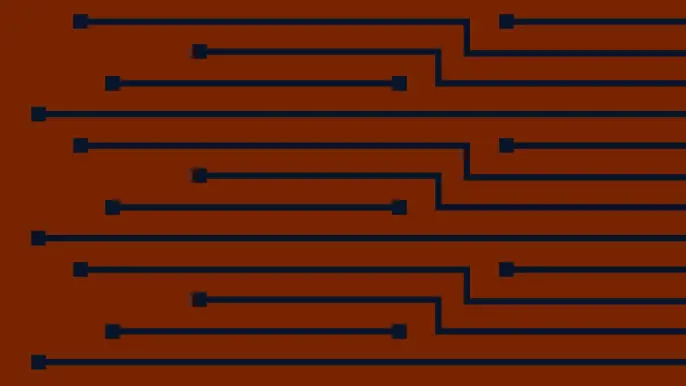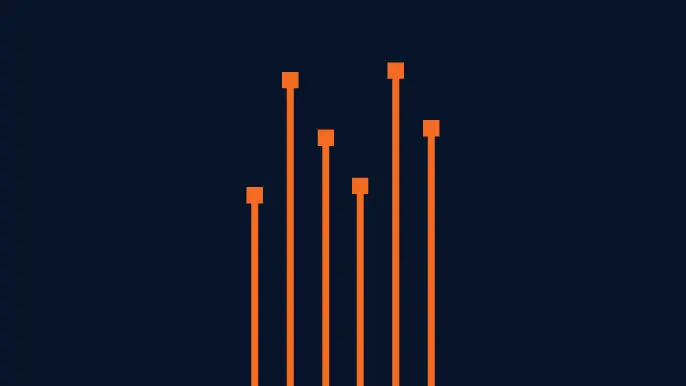
Clarifying CAASM vs EASM and Related Security Solutions
Lost in a labyrinth of cybersecurity acronyms? You’re not alone. Organizations have a wealth of tools to manage cyber threats. But with names like CAASM, EASM, and DRPS, plus their overlapping or complementary capabilities, it can be a lot of work to understand how they differ, and which technologies are right for you.
Let this quick guide be your roadmap to pinpointing the distinctions between cyber asset attack surface management (CAASM) and its closest counterparts. We’ll explain how CAASM stacks up against the following technologies, tools, and security strategies:
- CAASM vs configuration management database (CMDB)
- CAASM vs cloud security posture management (CSPM)
- CAASM vs continuous threat exposure management (CTEM)
- CAASM vs digital risk protection services (DRPS)
- CAASM vs external attack surface management (EASM)
- CAASM vs vulnerability scanners
By the end of this article, you’ll have a clear understanding of how CAASM fits into a proactive security strategy and how it works alongside related solutions to create more robust defenses.
What is CAASM?
CAASM (Cyber Asset Attack Surface Management) is a solution that equips both security teams and IT teams with a comprehensive view of all assets in an IT estate. It’s an aggregator of data – collecting, ingesting, and deduplicating it to deliver a single comprehensive view about assets and their contextual relationships. This data is then used to identify potential exposures and coverage gaps across the entire asset landscape, including risks that relate to their interconnection. By maximizing asset visibility and uncovering connections between assets, CAASM empowers teams with a streamlined approach to visibility across data, users, and devices.
Let’s break it down further. An organization’s attack surface encompasses all of its digital assets – essentially any element that could be exploited by a malicious actor. These assets can be anything from devices such as endpoints and servers to software running on these devices to cloud-based systems and identity of the users and accounts. CAASM takes a defender’s point of view, from the inside looking out, to collect data from various solutions, bring visibility to the complete attack surface, and better identify risks.
This enhanced visibility allows security teams to pinpoint gaps in their existing security measures. They can then prioritize remediation efforts, focusing on the assets that pose the greatest risk to the organization. Ultimately, CAASM strengthens a company’s overall security stance by enabling a proactive approach to risk management.
Unscrambling the Alphabet: CAASM vs EASM and Related Solutions
The distinctions are nuanced between CAASM and related solutions. Use the section below for easy reference.
CAASM vs CMDB
Cyber asset attack surface management vs configuration management databases
CAASM and configuration management databases (CMDB) are distinct solutions designed for unique purposes. The main difference is that CMDBs are static, serving the needs of IT teams by tracking known assets and their IT configurations. This does not typically include the information that security teams need to drive some of the cyber use-cases we have described. However, CAASM is tailored to the needs of security teams, providing real-time data, workflows, reports, and other features about both known and unknown assets throughout their environment.
CAASM vs CSPM
Cyber asset attack surface management vs cloud security posture management
Cloud security posture management (CSPM) focuses on cloud environments, ensuring that cloud resources are properly configured and compliant with desired standards. Key applications include continuous monitoring of cloud infrastructure, aiding remediation workflows, and maintaining compliance with industry standards like GDPR and HIPAA.
In contrast, CAASM offers a broader scope, encompassing cloud assets, on-premises assets, and more. While CSPM is specialized for cloud security, CAASM provides a holistic view of an organization’s asset map, managing and protecting all cyber assets regardless of their location.
CAASM vs CTEM
Cyber asset attack surface management vs continuous threat exposure management
Continuous threat exposure management (CTEM) is a proactive approach to security, focusing on identifying, assessing, and mitigating risks within an organization’s digital environment. The five phases of CTEM are: scoping, discovery, prioritization, validation, and mobilization. CTEM is a framework, while CAASM is a technology that supports the framework. CAASM plays a crucial role in the first three stages: scoping, discovery, and prioritization.
CAASM’s strength lies in its ability to understand the relationships between assets and security controls. This contextualization is vital for pinpointing potential vulnerabilities within those assets. By pairing CAASM with complementary solutions like EASM and DRPS, organizations gain a clearer picture of their attack surface, allowing them to effectively scope security efforts.
CAASM vs DRPS
Cyber asset attack surface management vs digital risk protection services
Similar to EASM, digital risk protection services (DRPS) focus on identifying risks on external-facing assets such as brand impersonation and data leaks. However, EASM can uncover previously unknown assets, whereas DRPS collects threat intelligence from multiple sources, including clear (surface) web, deep web, and dark web to identify potential threats to an organization.
CAASM vs EASM
Cyber asset attack surface management vs external attack surface management
External attack surface management continuously scans your external perimeter to identify and catalog known and unknown assets and any associated risks or exposures. The primary difference between EASM and CAASM is that EASM focuses on active discovery of external or internet-facing assets, while CAASM creates an inside-out view of a company’s assets. While EASM can better inform the scope of external assets, CAASM focuses on internal assets, bringing a holistic view of all assets in an IT estate when paired together. Both technologies share the capability to overlay vulnerability information to help with prioritization of remediation efforts.
CAASM vs vulnerability scanners
Vulnerability scanners often feature an “asset” dashboard, which lists all IP-connected systems that the product has encountered. When considering the earlier definition of an asset and the fact that these products can only see what is scannable over a network, their datasets are limited, in contrast to what is available in a CAASM product. Also, vulnerability scanners only scan what it is told to scan, leaving unknown assets at risk, where as CAASM aggregates data from multiple sources to uncover shadow IT. It is important to understand this distinction, as the use of vulnerability management solutions alone can lead organizations into a false sense of security that they have a complete, end-to-end view of their assets.
Additional Acronyms & Definitions
| Acronym | Definition |
|---|---|
| DORA Digital Operational Resilience Act | A regulation in EU that introduces a standardized framework centered around TIBER-EU testing, complemented by disclosure and intelligence sharing policies, with the goal of improving digital operational resilience throughout the EU’s financial sector. |
| TCT TLPT Cyber Team | This team mirrors the TIBER Cyber Team, comprised of the staff within the TLPT authority where all TLPT-related matters are addressed. |
| ICT Information and communication technology | The infrastructure and components that enable computing. |
| TLPT Threat-led penetration testing | A framework that mimics the tactics, techniques and procedures (TTPs) of real-life threat actors perceived as posing a genuine cyber threat, that delivers a controlled, bespoke, intelligence-led (red team) test of the financial entity’s critical live production systems. |
| TIBER-EU Threat intelligence-based ethical red-teaming | A European framework for threat intelligence-based ethical red-teaming. |
| White team | The team within the entity being tested that is responsible for the overall planning and management of the test, in accordance with the TIBER-EU framework. |
The approach to continuous attack surface monitoring has come a long way in the last few years. While CAASM has similarities to other exposure management and asset management solutions, its distinction lies in its ability to consolidate data from multiple sources to provide a single source of truth for a company’s attack surface.
Explore More Blog Posts

Shift Left Security: Integrating Pentesting Early in Development
Discover how to integrate penetration testing into a shift left security strategy, enhancing application security early in the development lifecycle.

Validating Azure Cloud Security with Breach and Attack Simulation as a Service
NetSPI’s Breach and Attack Simulation as a Service offers focused simulation tests for Azure users to validate your cloud security capabilities.

Getting Shells at Terminal Velocity with Wopper
This article introduces Wopper - a new NetSPI tool that creates self-deleting PHP files and automates code execution on WordPress using administrator credentials.

